



Richie Mehta says creating and directing the first season of Delhi Crime was easier than what he had to deal with for his new eight-episode series, Poacher.
Delhi Crime Season One was a fictional depiction of the one-week Delhi Police investigation into the 2012 gang rape and murder of Jyoti Singh that shook the country and the world at large.
Poacher, whose first three episodes were premiered in the Indie Episode Program section of the 2023 Sundance Film Festival this week, is about a complex and clandestine crime with global links: ivory poaching.
ALSO READ: Sundance 2023 winner | Against the Tide's Sarvnik Kaur on how the Kolis risk their life to be able to surviveALSO READ: Sundance 2023: Home is where the hesitance is, for 'White Ant' director Shalini Adnani“With Delhi Crime, the audience, if they have a heartbeat, are hooked into the story in the first 90 seconds,” Richie Mehta tells Moneycontrol. “With Poacher, the argument of why you should care about a cause that you don’t necessarily care about takes eight episodes to come across.”
According to the press note shared by the makers, Poacher is “based on a true story, court documents and testimonials” and follows “a group of IFS officers, NGO workers, police constables and good Samaritans who risk their lives investigating the largest ivory-poaching ring in the history of India and bringing the criminals to justice.”
Delhi Crime Season One was a phenomenal success and its journey from script to screen was unique. Produced like an independent film, Delhi Crime had two episodes premiered at the 2019 Sundance Film Festival. It picked up buzz and Netflix acquired the series. Mehta and his team have gone down the same path with Poacher, which Mehta estimates will have a worldwide release in about four to five months.
The mostly Malayalam-language production, written entirely by Mehta, has some Hindi and Bengali dialogue. Gopan Chithambaran translated Mehta’s English dialogue into Malayalam while Suprotim Sengupta and Amrita Bagchi worked on Hindi and Bengali dialogue, respectively.
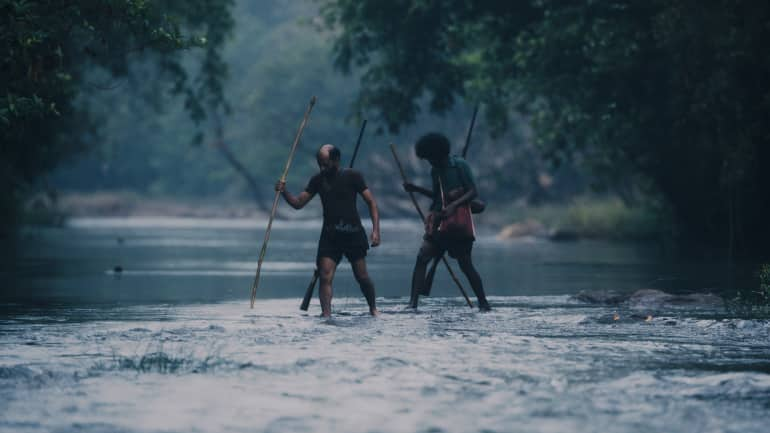 Noor Ali Ahmed and Praveen TJ appear in a still from 'Poacher' by Richie Mehta, which was an official selection of the Indie Episodic Program at the 2023 Sundance Film Festival. (Photo: Johan Heurlin Aidt, courtesy of Sundance Institute)
Noor Ali Ahmed and Praveen TJ appear in a still from 'Poacher' by Richie Mehta, which was an official selection of the Indie Episodic Program at the 2023 Sundance Film Festival. (Photo: Johan Heurlin Aidt, courtesy of Sundance Institute)Poacher stars Nimisha Sajayan, Roshan Mathew, Dibyendu Bhattacharya, Ankith Madhav, Kani Kusruti and Suraj Pops. QC Entertainment, in association, with Suitable Pictures and Poor Man's Productions, has bankrolled the project.
In an exclusive interview with Moneycontrol, the London-based Canadian filmmaker of Indian origin discusses the origins and making of Poacher and how it differs from Delhi Crime. Edited excerpts from the conversation:
Getting a whole series produced independently, premiering it at Sundance Film Festival, and then picking up streamers is working out for you really well.This was the only right way to do Delhi Crime and Poacher.
With Delhi Crime, this method was out of necessity because every studio and streamer kept saying no since they found it too controversial. My argument was that I won’t be exploitative and treat the subject sensitively. I was lucky to find financiers based on my previous films (Amal, 2007; Siddharth, 2013; India in a Day, 2016) and the Delhi Crime script.
Similarly with Poacher, which is a wildlife-conservation-related genre work, I need a little freedom for that, which I wouldn’t get if there was a deadline assigned from Day One. Again, I found financiers based on Delhi Crime, my track record and the Poacher script. You make it, send it to Sundance, and be in talks for release that happen concurrently. There are no free rides here. Sundance was the curator which puts across our show as something that stands out from the rest, that’s what the festival does for us.
Also, with Poacher, it is based on real promises I made to real people who wanted their stories told. I had to preserve that integrity all the way through and finish this.
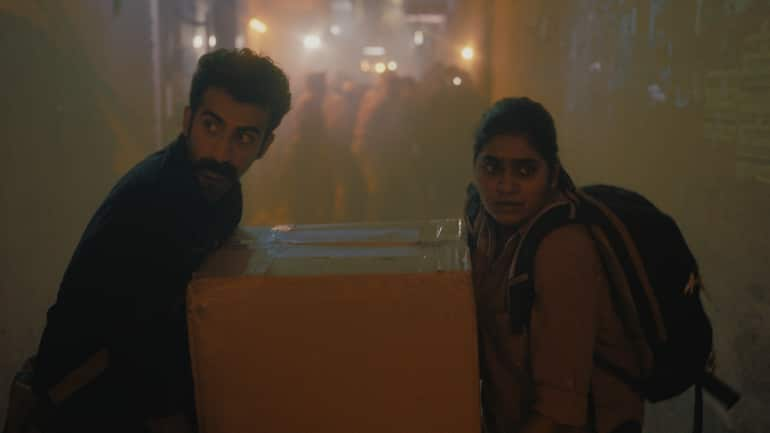 Roshan Mathew and Nimisha Sayajan appear in a still from 'Poacher' by Richie Mehta. (Photo: Johan Heurlin Aidt, courtesy of Sundance Institute)So, how did ‘Poacher’ begin?
Roshan Mathew and Nimisha Sayajan appear in a still from 'Poacher' by Richie Mehta. (Photo: Johan Heurlin Aidt, courtesy of Sundance Institute)So, how did ‘Poacher’ begin?When I was making my documentary India in a Day, which was created out of crowdsourced one-minute-long footage, someone sent me a video of a raid in Delhi, which was the result of an investigation into ivory-poaching. Since it was a crime scene, I couldn’t include it in my film but I promised the officials and NGO people involved in it that I would return to this subject in a few years after I had finished Delhi Crime.
After finishing Delhi Crime, I contacted Wildlife Trust of India for Poacher and they said, why don’t we connect you to a ‘wildlife crime fighter’. I was, like, ‘What? You have wildlife crime fighters?’
That’s how I met this person around midnight for 10 minutes outside the Nehru Enclave Metro station. He was just about to go to the Indo-Nepal border on an undercover mission with a group of smugglers and he was instrumental in the Kerala-Delhi investigation that led to the raid which sparked my interest in wildlife mafia. I showed him a few minutes of Delhi Crime, which was, then, at the post-production level, and he immediately agreed to work with me.
Meanwhile, I finished Delhi Crime (Mehta was not involved with Delhi Crime Season Two beyond his credits as creator and executive producer). He returned and throughout 2019, I travelled between Kerala and Delhi, with this person introducing me to other crime fighters, vigilance officers, chief wildlife wardens, chief conservators, and most importantly, informants from the ivory-trading mafia, whom we would meet in the jungle quietly. Word couldn’t go out that I am meeting informants. That’s how I understood this world and this people who are doing everything possible to save the environment.
 Noor Ali Ahmed in a still from 'Poacher' by Richie Mehta. (Photo: Johan Heurlin Aidt. courtesy of Sundance Institute)How did you turn this research into an eight-episode screenplay?
Noor Ali Ahmed in a still from 'Poacher' by Richie Mehta. (Photo: Johan Heurlin Aidt. courtesy of Sundance Institute)How did you turn this research into an eight-episode screenplay?During research, if someone told me something interesting, I could see it in my head that that’s 15 minutes of an episode, I could see the scene in context. I could see whole sequences or themes as I kept meeting people and taking notes, like, someone I met could turn into, say, a supporting character.
And then during the pandemic in 2020, I organised it all into one big chronological timeline and I could see the breaks. When the first lockdown got lifted, I travelled back and forth, again, between Kerala and Delhi for more research and plug the gaps. Then during the second lockdown, I refreshed the script with remote research.
Shooting happened between March and June last year. By that time, almost everyone in my cast and crew had had COVID and we shot in this bubble in the jungle.
Where did you shoot ‘Poacher’?All real locations. We were based out of Kothamangalam, which is 90 minutes east of Kochi. Then we shot in the jungles of Malayattoor, Kerala, where poaching would actually take place. We did not go very deep into the jungle, but we got enough to get a sense of the forest department. The last two episodes take place in Delhi. The series is mostly in Malayalam until then but the last two episodes are mostly in Hindi.
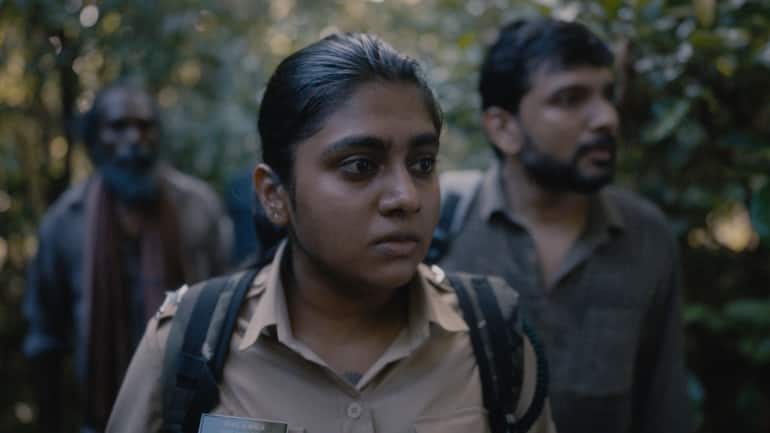 Nimisha Sajayan, Ankith Madhav and Suraj Pops appear in a still from 'Poacher' by Richie Mehta. (Photo: Johan Heurlin Aidt, courtesy of Sundance Institute)Who are the primary characters in ‘Poacher’?
Nimisha Sajayan, Ankith Madhav and Suraj Pops appear in a still from 'Poacher' by Richie Mehta. (Photo: Johan Heurlin Aidt, courtesy of Sundance Institute)Who are the primary characters in ‘Poacher’?Nimisha Sajayan is the lead. She plays Mala Jogi. She is a range officer in the Kerala Forest Department. She is obsessed with stopping wildlife crime as her father was an elephant poacher. She feels the need to atone for her father’s sins.
Helping her in the investigation is Alan Joseph, played by Roshan Mathew. He is the wildlife crime fighter at the Wildlife Trust of India. Based in Delhi, Alan is a computer programmer by training, who is also a snake expert and rescues snakes on the side. He is good at data analysis, can figure out who are the potential poachers from tonnes of call logs. He hides this side of his life from his family who know him as just a computer programmer.
Dibyendu Bhattacharya plays Neel Banerjee, the field director of the Kerala Forest Department. He is a former intelligence officer and uses intelligence-gathering techniques to do this operation. For him, the challenge is to ensure internal sabotage and corruption doesn’t get in the way of investigating what they think is the biggest elephant-poaching case in Asian history.
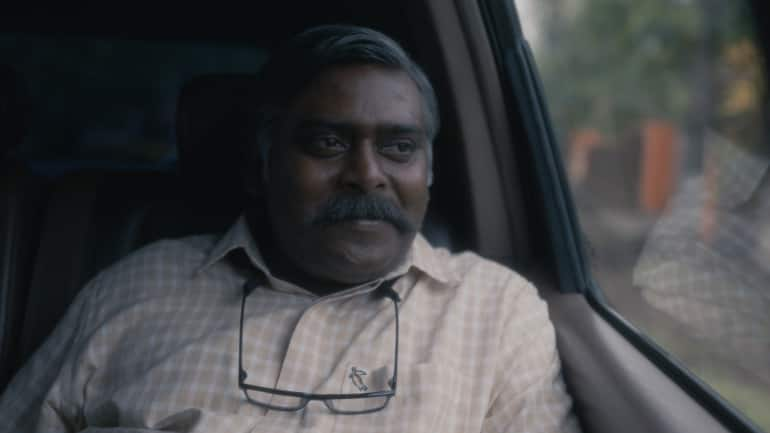 Dibyendu Bhattacharya in a still from 'Poacher' by Richie Mehta. (Photo: Johan Heurlin Aidt, courtesy of Sundance Institute)
Dibyendu Bhattacharya in a still from 'Poacher' by Richie Mehta. (Photo: Johan Heurlin Aidt, courtesy of Sundance Institute)Ankith Madhav, plays Vijay Babu, a deputy range officer working under Mala. In the beginning of the series, he screws up and botches the raid on the main poacher who gets way. Mala, with whom Vijay has a romantic history, brings him back into the investigation. Basically, he has to prove himself again.
Kani Kusruti plays a divisional forest officer Dina in Thiruvananthapuram. Dina finds key information in the beginning. She encounters an ivory dealer but he is so powerful, he turns the press against her. She is then sidelined. Through her character, we see the problems that forest officers, especially women, face.
And, all of this is kicked off by Aruku, played by Suraj Pops. He used to be a forest department employee but became a poacher. He is not wealthy and lives hand-to-mouth. He returns as an informant out of guilt. Through him we get a perspective on why people turn to poaching, and in episode six, we understand what led him to be a whistleblower.
‘Delhi Crime’ faced criticism for a sanitised, saintly portrayal of Delhi Police. How nuanced is ‘Poacher’?That criticism is unfounded. We did show a lot of cops working against themselves, police threatening victims in lock-ups, lazy officers, and the kind of institutional roadblocks good police officers face. I cannot vouch for the entire organisation or the government but I can definitely vouch for the investigating team of the 2012 case. They did an excellent job.
With Poacher, ultimately, the places that poaching was happening in were officially being monitored. Still, poachers went in. How did that happen?
And, this time, it’s not just the forest department but NGO workers and a combination of people working together to stop crime.
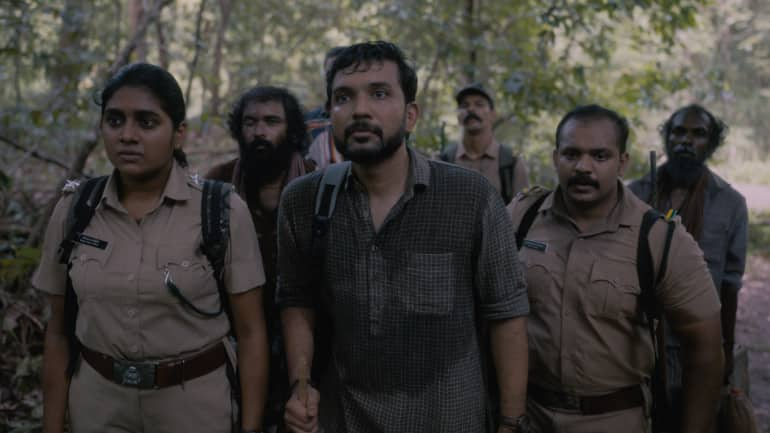 Nimisha Sajayan, Dileep Kumar Vasu, Ankith Madhav and Suraj Pops in a still from 'Poacher' by Richie Mehta. (Photo: Johan Heurlin Aidt, courtesy of Sundance Institute)What new or different can fans and viewers of ‘Delhi Crime’ Season One expect from ‘Poacher’?
Nimisha Sajayan, Dileep Kumar Vasu, Ankith Madhav and Suraj Pops in a still from 'Poacher' by Richie Mehta. (Photo: Johan Heurlin Aidt, courtesy of Sundance Institute)What new or different can fans and viewers of ‘Delhi Crime’ Season One expect from ‘Poacher’?Delhi Crime was the experiment, stylistically. Poacher is a more ramped-up but more deliberate version of the same style.
With Delhi Crime, we had a plan but didn’t know if it would work. We were always behind the ball in terms of keeping up with the shoot schedule. We were making this seven-hour independent film that had no precedence.
But a kind of observational shooting style was developed where the camera follows the characters. It’s the same in Poacher but this time it’s more controlled. The crew is the same. Additionally, we are also showing the animals’ point-of-view. I feel human beings are inherently chaotic and they have brought so much chaos to the natural world. My style for the humans’ bits in the series is energetic, while with the animal kingdom, which is all computer graphics, there is a stillness and calmness in the filming.
Discover the latest Business News, Sensex, and Nifty updates. Obtain Personal Finance insights, tax queries, and expert opinions on Moneycontrol or download the Moneycontrol App to stay updated!
Find the best of Al News in one place, specially curated for you every weekend.
Stay on top of the latest tech trends and biggest startup news.